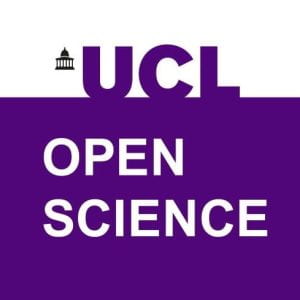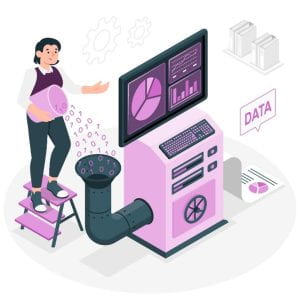This is the last article of our Copyright and Open Science series by Christine Daoutis, UCL Copyright Support Officer, which explored important aspects of copyright and its implications for open research and scholarship.

Image caption. Jonathasmello, CC BY 3.0 , via Wikimedia Commons
In this post, we conclude our Copyright and Open Science series by focusing on open education. Broadly defined, open education is “a philosophy about how people should produce, share, and build on knowledge” (source: What is open education? Opensource.com). It refers to values, practices and resources that aim to make scholarship more accessible, equitable, sustainable, transparent and collaborative.
The UNESCO definition of OERs highlights the importance of freely accessible educational materials in advancing open education practices globally. This includes the creation and reuse of OERs—materials that are either out of copyright or licensed to allow reuse. However, open education extends beyond resources to include practices such as integrating open science into teaching, sharing educational practices, and co-creating resources with learners.
OERs include a wide range of materials, such as open textbooks, open access articles, lecture handouts, images, film, slides, lecture recordings, assessment resources, software and whole courses such as Massive Open Online Courses (MOOCS). By default, all these resources are protected by copyright. If you’re planning to create open educational resources, here’s some copyright advice.
Addressing copyright in OERs
1. Know who owns what. If you are creating or collaborating on a teaching resource, it is essential to clarify who holds the copyright. This could be you, the author; your employer, if the work was created in the course of employment; or the resource could be co-owned with others, including students or sponsors. To license a resource for reuse (for example, to make it available under a Creative Commons licence), you must own the copyright to the resource and/or agree such licensing with co-owners. ♦ Copyright ownership at UCL is addressed in the UCL IP Policy.
2. Make the resources openly available and reusable. Once you are certain that the resource is yours to license, consider making it openly available, under a licence that allows reuse. Open access repositories support the discovery and access of different types of materials, including OERs. UCL has a dedicated OER repository, which accepts materials created by its staff and students.
As for licensing: we have explained in a previous post how Creative Commons licences work; and you can read more on how CC licences support OERs on the Creative Commons wiki. Licensing under the most permissive of the licences, the Creative Commons Attribution licence (CC BY), supports the ‘five Rs’ of OERs: enabling others to “retain, revise, remix, reuse and redistribute the materials”. (David Wiley, Defining the “Open” in Open Content and Open Educational Resources, Improving Learning blog).

Image caption: sOER Frank, CC BY 2.0, via Wikimedia Commons
3. Address any third-party materials. If the resource contains materials you don’t own the copyright to (such as third-party content), you have a few options:
- Reuse works that are out of copyright (public domain) or openly licensed. These might include Creative Commons images and videos, open access articles, and OERs created by others. ♦ See UCL’s guidance on finding OERs and a reading list with links to many openly licensed resources.
- Get permission from the copyright owner. If the material is not openly licensed, you might consider seeking permission to reuse it. Be clear about how the resource containing the material will be shared (i.e., as an OER). Third-party materials included in an OER should be shared under their own copyright terms (e.g., their reuse may be more restricted than the rest of the resource) and this should be communicated when sharing.
- Rely on a copyright exception. In some cases, instead of getting permission you may decide to rely on a copyright exception, notably the quotation exception in UK copyright law. Using exceptions requires judgement. You’ll need to determine whether the use of the material is ‘fair dealing’: does the purpose justify the use? Does it affect the copyright owner’s market? Overall, is it “fair” to all parties involved? Be aware that copyright exceptions vary by country, which is important when making a resource globally available. The Code of Best Practices in Fair Use for Open Educational Resources explores these approaches further, putting forward a framework that could be applied internationally.
Putting the copyright advice to practice: examples from UCL’s copyright online tutorials.

Screenshot from UCL’s Copyright Essentials tutorial, which includes a photo by Michael Neel from Knoxville, TN, USA, CC BY 2.0, via Wikimedia Commons.
While creating UCL’s Copyright Essentials and Copyright and your Teaching, two online tutorials introducing copyright, the UCL Copyright support team drew on its own advice. Specifically:
- Copyright ownership and attribution were addressed. Copyright Essentials is an adaptation of an original resource, which was also openly licensed. Attribution to all original authors was included.
- Both tutorials are publicly available online, allowing anyone to access and complete them. They are also licensed for reuse under the Creative Commons Attribution licence, permitting others to adapt and redistribute the materials with appropriate attribution.
- Third-party materials mostly included openly licensed images and links to lawfully shared videos and documents. However, for some materials, we opted to rely on copyright exceptions, which involved a degree of interpretation and risk. This was highlighted in the tutorials, inviting learners to reflect on the use of exceptions.
It should be noted that using proprietary e-learning tools (like Articulate Rise) to develop the tutorials restricts reuse. While the shared resources can be accessed, they cannot be downloaded or edited. Authors wishing to adapt the resources have the option to recreate the materials under the licence terms or contact us for an editable copy. Ideally, these resources should be created with open-source tools, but there’s a trade-off between the advantages of user-friendly, accessible proprietary tools and these limitations.
For more advice on copyright and OERs please contact copyright@ucl.ac.uk.
Read more from the Copyright and Open Science Series:
- Developing a Copyright Literacy Community at UCL (UCL Copyright blog, 29 April 2024): An introduction to building a community around copyright literacy at UCL.
- Copyright Literacy Matters: Developing a Copyright Literacy Strategy at UCL (UCL Copyright blog, 14 October 2024): A deep dive into UCL’s strategy for copyright literacy across the institution.
- Keeping it Fair and Honest: How Copyright Exceptions Can Support Your Thesis, Publications, and Teaching (UCL Copyright blog, 22 February 2024): This post explores copyright exceptions, with practical examples for researchers and educators.
- Copyright and Open Science in the Age of AI: What Can We All Do to Ensure Free and Open Access to Knowledge for All? (Open@UCL blog, 24 October 2024): A discussion on the intersection of copyright, open science, and AI, focusing on access and equity.
- Copyright and AI Part 1: How Does Copyright Apply to AI-Generated Works? (Open@UCL blog, 21 June 2024): An exploration of the implications of AI in copyright law, particularly concerning AI-generated works.
- Copyright and AI Part 2: Perceived Challenges, Suggested Approaches, and the Role of Copyright Literacy (Open@UCL blog, 15 August 2024): A follow-up on the challenges AI presents to copyright, along with potential solutions and the role of copyright literacy in addressing these challenges.
- Text and Data Mining (TDM) and Your Research: Copyright Implications and New Website Guidance (Open@UCL blog, 13 May 2024): Insights into how copyright affects text and data mining (TDM) in research, including new guidance.
- How Understanding Copyright Can Help You as a Researcher (Open@UCL blog, 4 April 2024): A beginner’s guide to understanding copyright and its importance for academic research.
Filed under Copyright, Open Education, Open Science, Open Source, UCL Resources
Tags: copyright, copyright and open science, Copyright Law, Creative Commons, intellectual property, OER licensing, OERs, open access, Open Education, Open Educational Resources, open science
No Comments »




 Close
Close











